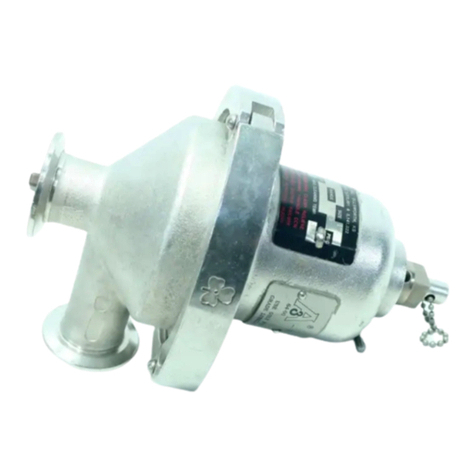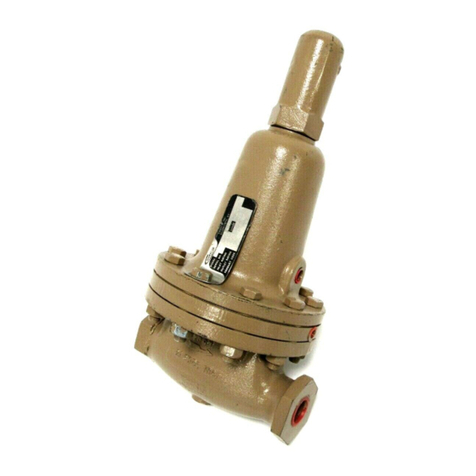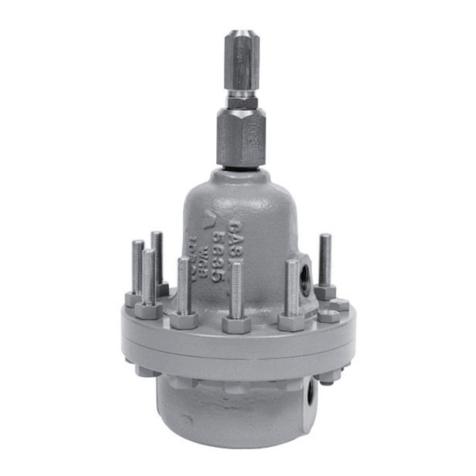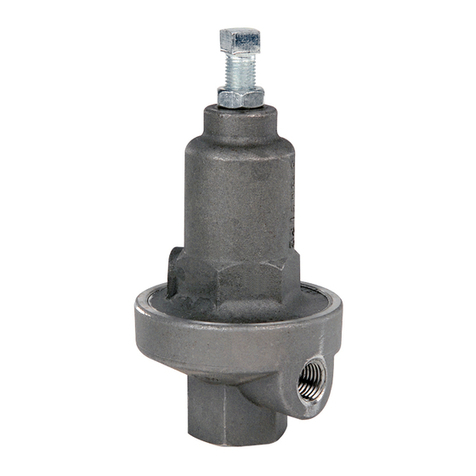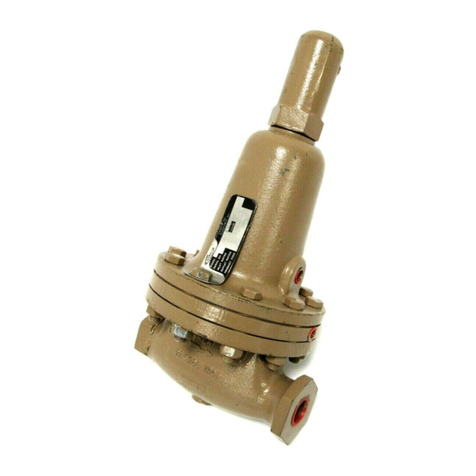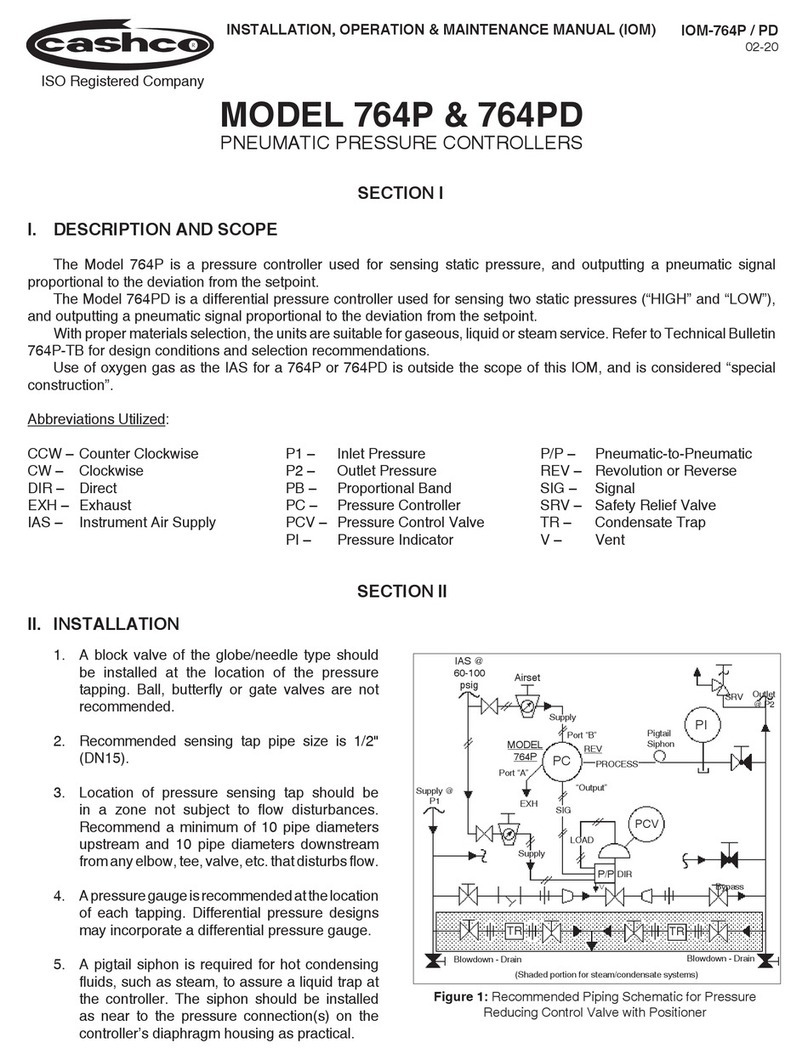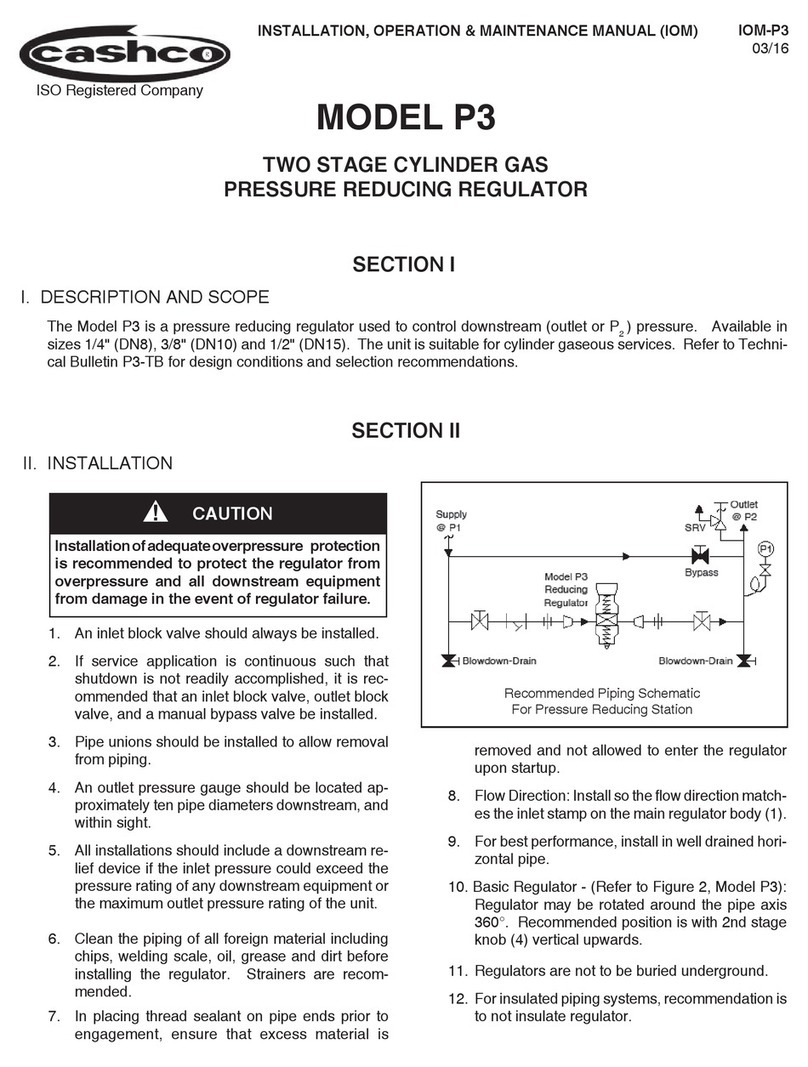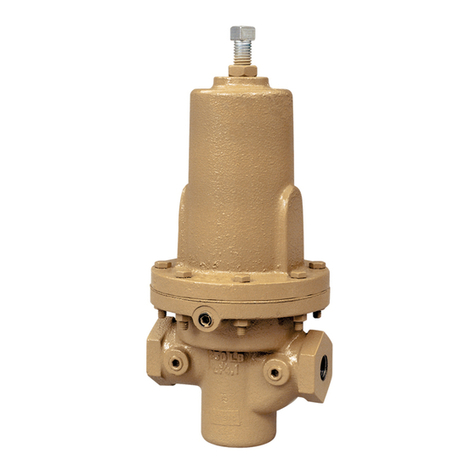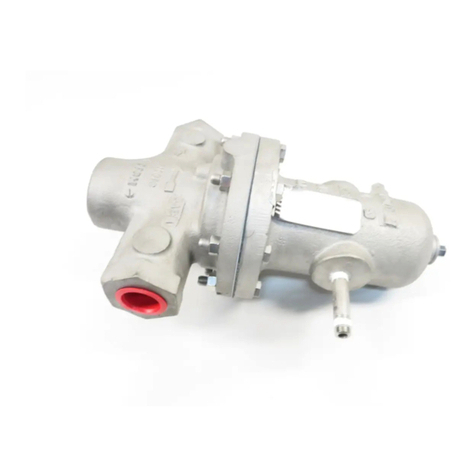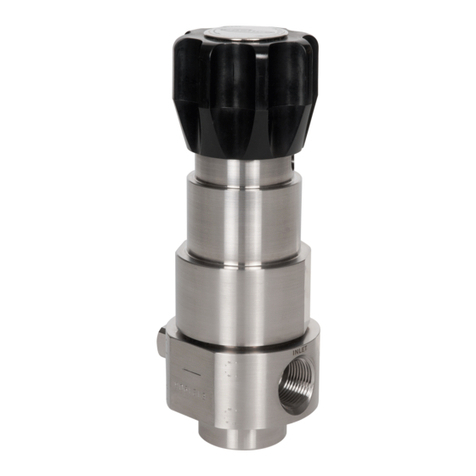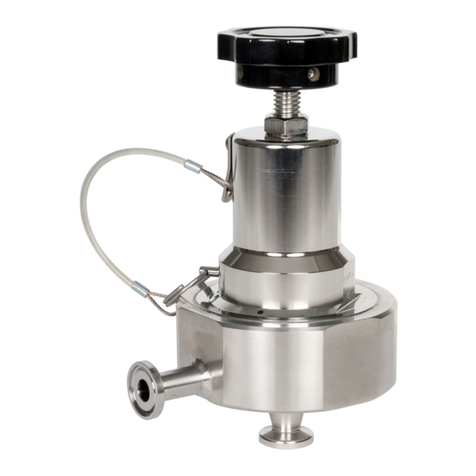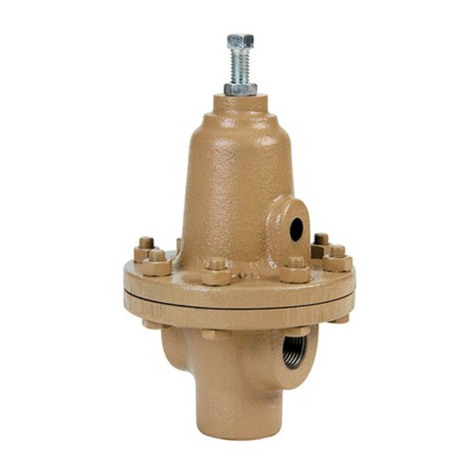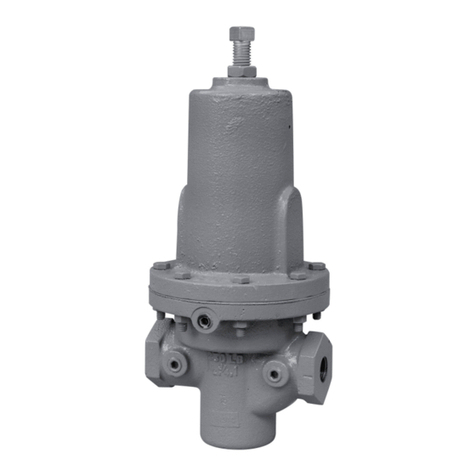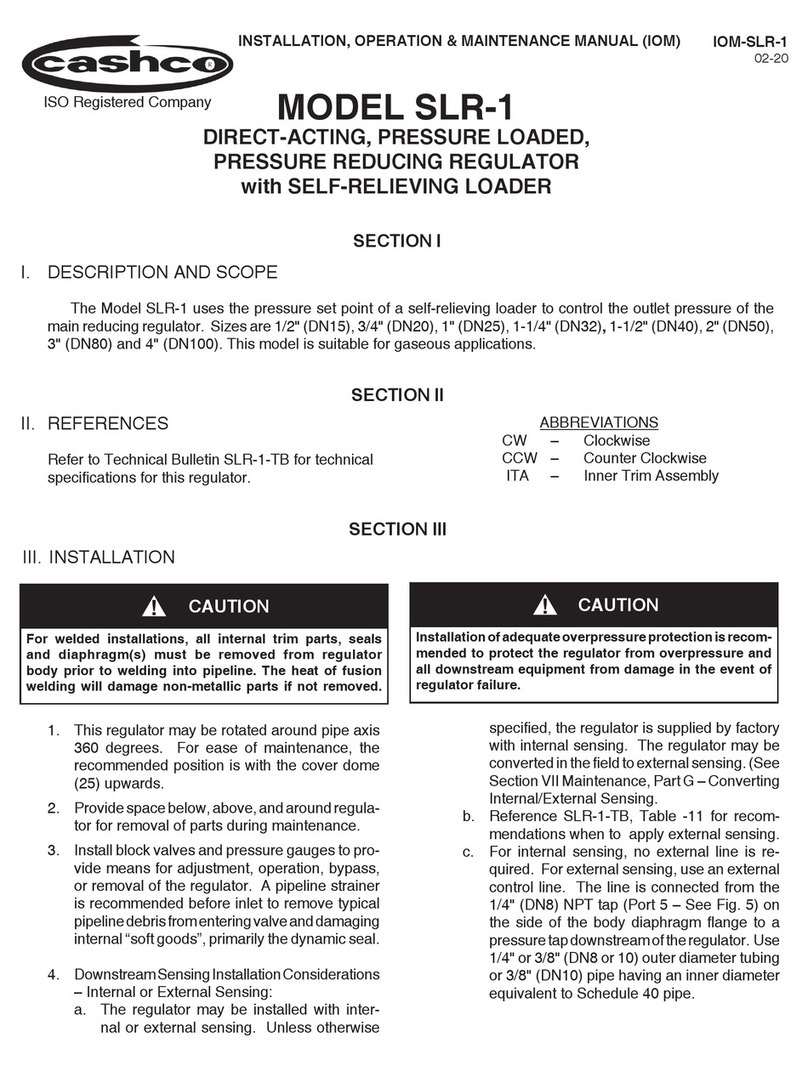
IOM-CA5/SA5 5
5. Installation of dynamic side seal (27) (See
Figures 1 & 2):
a. Type CP:
1. Stretch o-ring energizer/seal (27.2)
over end of plug (20), taking care not
to “cut” o-ring energizer/seal (27.2).
Using thumbs, work the o-ring ener-
gizer/seal (27.2) into the groove of
the plug (20).
NOTE: Use NO lubricants!
2. Position cap seal (27.1) ring with
rectangular cross-section at end of
plug (20). Stretch cap seal over the
plug, use thumbs to work the cap seal
onto the plug. DO NOT USE A TOOL
OR LUBRICANT FOR THIS STEP.
Continue pressing cap seal towards
the groove until the cap seal “snaps”
into the groove.
3. Insert shim (16) onto end of plug (20).
4. Thread piston-guide bearing (13) into
end of plug (20) and use the spanner
wrench to tighten to 60 to 70 ft-lbs (81
to 95 Nm).
b. Type UC:
1. Position u-cup seal (27.3) over end
of plug (20). Ensure the u-cup seal
is oriented with the center-open-
upwards as shown in Figure 1, as the
u-cup seal depends upon the P1-Inlet
pressure to activate proper sealing
action. DO NOT USE A TOOL OR
LUBRICANT FOR THIS STEP.
2. Insert shim (16) onto plug (20).
3. Thread piston-guide bearing (13) into
end of plug (20) and use the spanner
wrench to tighten to 60 to 70 ft-lbs (81
to 95 Nm).
6. Remove plug assembly from vise.
7. Place properly oriented seal (21) onto the
shoulder at the lower end of cage (23).
8. Insert valve plug (20) down through top of
cage (19).
F. Main Regulator Reassembly:
1. Fit cage o-ring seal (15) into the body (23)
groove.
2. With the ITA and cage held manually in the
closed position, insert ITA into body (23).
3. Properly align all three cage bolt (18) holes
as there is only one proper alignment pos-
sible. Apply a downward force to the top of
the cage (19) to hold the ITA in place. Place
cage washers (17) on bolts (18) and engage
the bolts into the body (23). Tighten the bolts
in alternating one-half revolution increments
to pull down the ITA evenly.
ENSURE THE ITA DOES NOT BECOME
WEDGED AS IT IS SLID INTO THE BODY.
Tighten cage bolts to a torque of 13-15 Ft-lbs
(17.5-20.5 Nm).
4. Units with CTFE or VTFE seat disc (31): Due to
the relative "hardness" of the CTFE and VTFE
material, to obtain the best possible shutoff
it is necessary to generate a "coined" seating
chamfer.
5. To coin the seat disc, use a soft-headed mallet
(rubber, leather), sharply rap the top center of
the piston-guide bearing (13) a couple of times
to press the plug (20) down into the bottom of
the cage, leaving a "coined" seating chamfer
on the seat disc (31).
6. To Install Diaphragm(s):
a. Install a new metal C-ring seal (28) into
the body (23) diaphragm flange groove.
b. Center diaphragm(s) (9) onto body's (23)
diaphragm flange.
c. Position upper diaphragm pressure plate
(8) centered on top of diaphragm(s) (9)
with "cup" upwards.
7. Place a small amount of light lithium grease
onto the adjusting screw (1) threads. Insert
the adjusting screw (1) (with lock nut (2))
into the spring chamber (4). Allow the end of
adjusting screw to protrude into the interior
approximately 1/2 inch (12 mm).
8. Place range spring (6) centered on upper
diaphragm plate (8).
9. Place a small amount of light lithium grease
into the recess of the spring follower (5). Install
washers (14) on spring follower. Place the
spring follower (5) on top of range spring (6).
10. Aligning matchmarks and bolt holes, place
spring chamber (4) over range spring (6).
If spring chamber flange rests on body (23)
flange without a gap, remove spring chamber
and rotate adjusting screw (1) deeper into
spring chamber cavity another 1/4 inch (6
mm). Repeat this procedure until the adjust-
ing screw keeps the two flanges faces from
touching by approximately 1/8 inch (3 mm).
